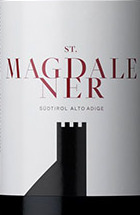February ’23 case club
Lorelle Pinot Grigio
O&T Sauvignon Blanc
Flegenheimer Sparkling Shiraz
Colterenzio Santa Magdalener Red Blend
Miloca SamsÓ/Carignan
Ego Goru Green Monastrell
Colterenzio Chardonnay Altkirch
Raventos i blanc rosado de Nit
Scribe Rosé of Pinot Noir
Unico Zelo Nero d’avola Halcyon days
Lan Rioja d-21
Kathryn Kennedy Cabernet Sauvignon Small lot

LORELLE PINOT GRIGIO (SUSTAINABLE)
Lorelle is produced from a small, family-owned and operated winery. Better known as the people behind Six Peaks Winery, founders, John and Lynn Albin (UC Davis), along with their son, Andrew Albin (OSU), work together to produce Lorelle, which are both true to variety and excellent companions with food.
After a long stint as winemaker at King Estate, John planted his own vines at Laurel Vineyard in 1981. Nearly a decade later they expanded from viticulture to winemaking. Throughout John’s long winemaking history in the Pacific Northwest, he has had many opportunities to work with and befriend many talented farmers. These relationships are part of what makes Lorelle so special. They not only meticulously tend to their own vineyards for this project, but they also source some of the best fruit from the best growers year after year to make wines that are consistently delicious.
Flavors of pear, stone fruit and green apple. This wine is conventionally dry, but has enough ripeness to balance the wine’s natural acidity making it well-rounded and easy to enjoy. The fruit for this wine comes from den Hoed Vineyard, within the Columbia Valley AVA, where it is a little cooler than other locations in the area. This cooler climate vineyard gives the wine unique freshness and bright acidity. This fruit is machine harvested so it is imperative that it goes immediately to the winery, this is why they ferment the grapes near the vineyard site in Richland, WA.
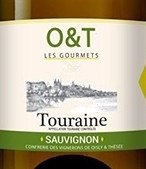 O & T Sauvignon Blanc Les Gourmets – SUSTAINABLE
O & T Sauvignon Blanc Les Gourmets – SUSTAINABLE
O&T (or in long form the Confrerie de Vignerons d’ Oisly et Thesée) has long played a leading role in the Loire winegrowing area of Touraine.
In the sixties, with the aim being to make better and fresher wines, O&T (or in long form the Confrerie de Vignerons d’ Oisly et Thesée) has long played a leading role in the Loire winegrowing area of Touraine. In the sixties, with the aim being to make better and fresher wines, O&T was the first French cooperative to install stainless steel tanks in the cellar. Over time the company has continued to push the envelope on expectations of quality out of this area, and their flagship Sauvignon Blanc bottling has long been one of our best-selling wines.
The vineyards that belong to the 60 “vignerons” that are a member of the O&T brotherhood are all situated east of the city Tours, in the vicinity of the villages Oisly and Thesée.
100% Sauvignon Blanc. Cold maceration, which creates a very open, fruity, and aromatic profile. Aged in stainless-steel vat on fine lees; bottled in early (every February) to maintain maximum freshness and verve. Pale yellow in color. Citrus, floral, and flint on the nose, with a medium-bodied palate and quenching acidity. A former vintage
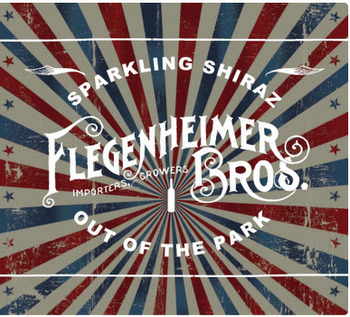 Flegenheimer Sparkling Shiraz Out of the Park – Sustainable
Flegenheimer Sparkling Shiraz Out of the Park – Sustainable
Benjamin Hammerschlag’s family arrived in the States from Germany in the late 1800’s. His great-great grandfather married a young girl by the name of Flegenheimer and joined her family’s business as New York Wine Merchants.
From Brooklyn to Yonkers, Hoboken to Newark, Flegenheimer Bros dealt exclusively in quality beverages. The business was established in 1876 and was still flourishing in 1919 when the manufacture, transportation, and sale of alcoholic beverages was outlawed in the United States through Prohibition.
Three generations later, the youngest Hammerschlag has decided to resurrect this heritage with wines of excellence from Australia. Big rich black fruits pair tightly with the dense high tannic structure of this Shiraz. Black pepper, anise, and tobacco play evenly throughout the palate, ending with blackberry preserves and a lingering finish
This sparkling Shiraz displays a vibrant lush garnet color and a bouquet of rich berry fruits, dark cherries, and soft lingering hints of integrated oak. On the palate bright juicy red fruits and sweet plum are bal- anced with silky tannins and a velvety smooth finish.
Lurid violet. Spice-accented blue fruits and succulent herbs on the fragrant nose and in the mouth; a subtle floral nuance builds in the background. Juicy, focused and energetic in style, offering good depth of flavor but no excess weight. Closes spicy and long, displaying a lingering boysenberry note and no obvious tannins. Idiosyncratic (as is all sparkling Shiraz, let’s face it) and a great companion for a young cow’s milk blue cheese.
COLTERENZIO SANTA MAGDALENER (ORGANIC)
One of my favorite places on the planet is the Süd Tirol, or Alto Adige as it’s called in the rest of Italy. Long a part of the Austro-Hungarian empire (ceded to Italy after World War One), this alpine region is surrounded on three sides by the stunning Dolomites (part of the Southern Limestone Alps).
It’s this mountain range that helps to produce the soils that make Alto Adige so special. The broad spectrum of soils ranges from volcanic porphyry (in Merano, Bolzano, and Kaltern) to weathered primitive rock soils composed of quartz and mica (the Isarco Valley) to limestone and dolomite (the Bassa Atesina) to sandy marl (south of Kurtatsch), offering just the right underlayer to each grape variety.
One of the false myths in the wine world is that wines made from cooperatives is insipid, not noteworthy juice, only fit for the bulk wine market. While cooperative wineries in France have, until the last 20 years or so, been responsible for perpetuating this myth, cooperatives in the Alto Adige (or Südtirol in German, the first language of many inhabitants here) have always made wines of great quality, finesse and terroir.
Perhaps it’s because of the contrast between the warm summers and cold winters of vineyards grafted onto the Dolomite foothills. With its generally cool nights even in the height of summer, Alto Adige is able to produce some very focused flavors and a degree of finesse. In the more northern part of the appellation, farms tend to be smaller, and it is often economically unfeasible for small farmers to produce and market wine.
Colterenzio was formed in 1960 when 28 farmers formed a cooperative in order to gain their independence from the wine merchants of the time. These rebels named the newly-founded cooperative after their homeland, the small hamlet of Schreckbichl, (Colterenzio in Italian).
Unlike the French co-ops which by paying by the ton, encouraged farmers to overcrop and bring lower quality fruit to the winery, Colerenzio works with farmers to encourage quality over quantity. Now over 300 farmer families are members of the co-op, located south of Bolzano in the Adige river valley. 12 varieties cultivated. 45% of production is red wine, 55% white wine. 300 days of sunshine a year.
Jancis Robinson: “The two neighboring wine regions of Trentino (the lower, more southerly part of the Adige valley around the town of Trento) and the upper Adige valley produce Italy’s most alpine wines in a region dominated by exceptionally competent co-operatives or cantine. Those of Bolzano, Caldaro, Colterenzio, Cortaccia, San Michele Appiano, Terlano and Termeno are notably quality-minded.”
Alto Adige wines tend to be brighter, less reliant on oak, focused, and clean, and these value-priced wines from Colterenzio are benchmarks of those descriptors.
These are all value-priced wines, that hopefully will find their way regularly into your homes and into your glasses.
Made from co-fermented Schiava (aka Vernatsch) (95%) and Lagrein grown in stony, glacial sedimentary soils and aged in larger older wooden casks, this offers bright wild berry and cassis flavors backed by black olive and licorice.

MILOCA SAMSÓ (CARIGNAN) – ORGANIC FOLLOWING NATURAL PRACTICES
Winemaker Josep-Maria Vendrell is in his thirties, but he already has a lot of experience under his belt, having spent several years as an assistant winemaker in the Capçanes cooperative in Montsant.
His family owns 40+ acres, 17 of vines around the village of Marca in Montsant, not far from Falset. He keeps the best old-vine lots of grapes and sells the rest off in bulk to Miguel Torres.
The trend in this area is to produce formulaic wines that show very little character other than the new oak that the popular winemaker-consultants in the area insist will please the journalists.
This young man is already bucking that trend, for he knows that the terroir (teruño in Spanish) of his area and very old vine (50-80 years) Garnacha and Cariñena are worth showing through in his wine. He is a winemaker to watch that strikes us as already being at the top of his game after only a few vintages on his own.
Vendrell’s vineyards are farmed organically without synthetic fertilizers, pesticides or herbicides. They are continuously plowed not only for weed management but to encourage deep root growth. By doing this, the grapes will inevitably show the underlying character of the terroir but also be more resistant to drought. His winery is perfectly suited to his artisan stature. It is modern, but manageable by one person. With the help of his father and an old family friend in the vineyards, this is truly hand-made wine that undergoes minimal handling in the cellars and leaps out of the glass once released from its bottle.
Josep-Maria Vendrell produces very little of this intriguing red wine produced from 100% old vine Carignan (or Samsó in the local Catalan language). A deep purple color belies this vibrant wine that is both rich and fresh. It’s viscous texture braced by almost crisp acidity and gritty mouth feel make this a stunning high-class “country” wine. -Importer Organically cultivated, Miloca Montsant hails from 50-80 year old Carignan vines and boasts seamlessly integrated notes of cherry, chocolate, sappy tannins, smoked meat and pepper.
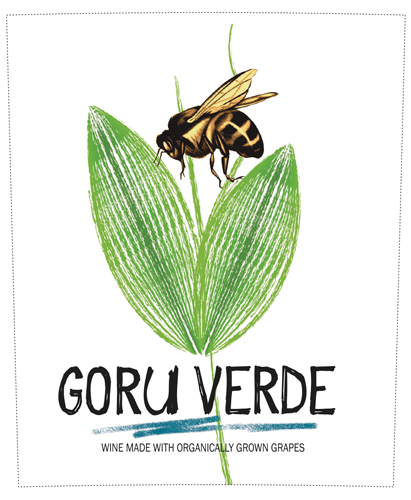 EGo Goru Green Monastrell (Mourvèdre) – Organic
EGo Goru Green Monastrell (Mourvèdre) – Organic
Santos Ortiz, of Spanish origin, and Ioana Paunescu from Romania, started from scratch in 2011, “con palicos y canicas” as they say in the region. This means that they were short of financial resources, but had an extraordinary talent for creating wines and coordinating financial, marketing, and sales department. “We launched a Project doing the opposite to what the books tell you or what you see in the industry.”
Aſter almost 6 months looking for a place to set up, they fell in love with a spectacular farm in an area known as the carpenter’s place, an elevated area of bunkers which had everything they wanted – it was high up so they could enjoy the beauty of the landscape and surrounded by their vineyards (Monastrell), which are well cared for and older than their combined ages. Located just a few kilometers away from the historical city of Jumilla, the winery has 35 hectares of vineyard, housing mostly native varieties like Monastrell.
Since the beginning, Ego Bodegas has taken a contemporary twist on wine-making and combined traditional methods with modern techniques. Their grapes are fermented separately in steel tanks, with capacities ranging from 4,000 to 12,000 kilograms.
The Green bottling is 100% Mourvèdre from 25+ year-old vines. Jumilla is in a very hot and dry climate, and the grapes grow to full phenolic ripeness, while maintaining the lively and mouthwatering acidity necessary to maintain freshness. Hand-harvested, fermentation in tanks. 90 points, Decanter, Wine Spectator, and Wine Enthusiast. Top 100 Wine Spectator.
Spicy plum and berry aromas come with a level of roasted wildness that’s familiar to well-made Monastrell from Jumilla. This is tight and well-structured, especially for the variety. Roasted, savory black plum and blackberry flavors finish smooth and easily.
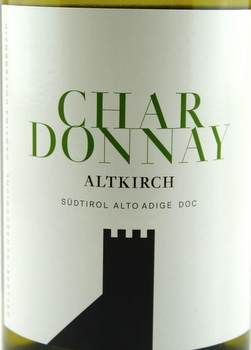 Colterenzio chardonnay altkirch – organic
Colterenzio chardonnay altkirch – organic
One of my favorite places on the planet is the Süd Tirol, or Alto Adige as it’s called in the rest of Italy. Long a part of the Austro-Hungarian empire (ceded to Italy after World War One), this alpine region is surrounded on three sides by the stunning Dolomites (part of the Southern Limestone Alps).
It’s this mountain range that helps to produce the soils that make Alto Adige so special. The broad spectrum of soils ranges from volcanic porphyry (in Merano, Bolzano, and Kaltern) to weathered primitive rock soils composed of quartz and mica (the Isarco Valley) to limestone and dolomite (the Bassa Atesina) to sandy marl (south of Kurtatsch), offering just the right underlayer to each grape variety.
One of the false myths in the wine world is that wines made from cooperatives is insipid, not noteworthy juice, only fit for the bulk wine market. While cooperative wineries in France have, until the last 20 years or so, been responsible for perpetuating this myth, cooperatives in the Alto Adige (or Südtirol in German, the first language of many inhabitants here) have always made wines of great quality, finesse and terroir.
Perhaps it’s because of the contrast between the warm summers and cold winters of vineyards grafted onto the Dolomite foothills. With its generally cool nights even in the height of summer, Alto Adige is able to produce some very focused flavors and a degree of finesse. In the more northern part of the appellation, farms tend to be smaller, and it is often economically unfeasible for small farmers to produce and market wine.
Colterenzio was formed in 1960 when 28 farmers formed a cooperative in order to gain their independence from the wine merchants of the time. These rebels named the newly-founded cooperative after their homeland, the small hamlet of Schreckbichl, (Colterenzio in Italian).
Unlike the French co-ops which by paying by the ton, encouraged farmers to overcrop and bring lower quality fruit to the winery, Colerenzio works with farmers to encourage quality over quantity. Now over 300 farmer families are members of the co-op, located south of Bolzano in the Adige river valley. 12 varieties cultivated. 45% of production is red wine, 55% white wine. 300 days of sunshine a year.
Jancis Robinson: “The two neighboring wine regions of Trentino (the lower, more southerly part of the Adige valley around the town of Trento) and the upper Adige valley produce Italy’s most alpine wines in a region dominated by exceptionally competent co-operatives or cantine. Those of Bolzano, Caldaro, Colterenzio, Cortaccia, San Michele Appiano, Terlano and Termeno are notably quality-minded.”
Alto Adige wines tend to be brighter, less reliant on oak, focused, and clean, and these value-priced wines from Colterenzio are benchmarks of those descriptors.
These are all value-priced wines, that hopefully will find their way regularly into your homes and into your glasses.
100% Chardonnay. Fermentation takes place in stainless-steel tanks with the temperature controlled at approx.65ﹾ F, a small part of the must is put in large wooden casks. The new wine subsequently matures for several months on the fine lees. Pale yellow with green reflexes in color, delicate and floral in aromas. The flavor is infused with hints of exotic fruits reminiscent of pineapple, and mango; on the palate it is a concentration of mellowness and vivacity with classic mineral notes and crisp acidity. 90 points, James Suckling
 RAVentos i Blanc Sparkling Rosé de Nit – Organic and Biodynamic
RAVentos i Blanc Sparkling Rosé de Nit – Organic and Biodynamic
The Raventós i Blanc estate, over 220 acres of woodlands and vineyards, was founded in 1497 and has been passed on through the family to the present day. It was a member of the Raventós family, Josep Raventós Fatjó, who made the first Cava ever in 1872.
In 1984, on the family estate, Josep-Maria Raventós I Blanc founded the winery as we know it today with a singular focus on achieving the highest quality wines. Today, the father and son team of Manuel and Pepe Raventós (Josep-Maria’s son and grandson) work side by side, continuing the prestigious lineage of this remarkable estate.
In December 2012, Raventós i Blanc took an important step in its evolution, leaving the Cava DO that they helped to establish and create a new designation, Conca del Riu Anoia. This small geographical area conveys strict viticultural traditions, the strength of the land, the unique, indigenous grape varieties, and the characteristics of the soils.
Raventos de Nit Like all Raventos wines, vintage-dated.The white varieties (Xa-Rello, Parellada, and Macabeu) for de Nit are from the La Barbera, La Plana, and El Viader estate plots with deep calcareous soils with a sand-rich loamy texture giving freshness and elegance. The Monastrell (Mourvèdre), providing color (without sacrificing freshness) is from the lower terraces of the El Serral hillside. Made in the traditional/ Champenoise method. Vinification in stainless steel tanks followed by blending and secondary fermentation in the bottle, aged for a minimum of 18 months.

Scribe Rosé of Pinot Noir – organic
The quality level of California Rosés has risen so rapidly in the past few years that it’s difficult, even for a rosé-centric shop like Farmstead to keep up with all the new pink producers! We discovered this wine in a restaurant a few years back and were impressed by how well it goes with all sorts of foods.
The Scribe Winery tale began with a charming young entrepreneur named Andrew Mariani and a storied piece of land – home, most recently, to a turkey farm – located about three miles east of the Sonoma town square. A mile-long driveway lined with palm trees leads to a decrepit hacienda built a century ago by two bootlegger brothers from Germany, and acres and acres of brush and cactus surround impeccably trellised grapevines. In the distance are vast expanses of conserved mountainside, where foxes and mountain lions roam beneath California bay laurel, oak and madrone trees.
Andrew Mariani and his brother Adam grew up in a farming family in Winters, California, and they believe themselves to be scribes of their land, with the winery a result of their labor. One of their primary goals is to help revive their property while making sure not to overpower nature’s patterns in the process. This goal is embodied in what they call “Forever Wild Farming,” which works to integrate their harvest into the existing ecosystem of the land.
Together with winemaker Kristof Anderson, the Mariani brothers have chosen to ban the use of chemicals on the property and instead solely participate in natural methods of vinification. The team works to increase the biodiversity of their land by encouraging natural species to thrive alongside the vines. Andrew reiterates that the outcome of these choices includes wines that are faithful representations of their origins and a sustainable model that enriches rather than depletes the land.
Made from Pinot Noir grapes (clones: Martini, Pommard, Mount Eden & Wadenswil) grown on the Scribe Estate on the south-west facing slope of Arrowhead Mountain. Harvested early in the season when the fruit is full of bright, high-toned acidity. 100% whole cluster direct pressed, followed by a long, cold fermentation in stainless steel tanks to preserve vibrant aromatics. Energetic and fruit-forward on the nose with a dry finish. Organic grapes.

UNICO ZELO NERO D’AVOLA – ORGANIC, FOLLOWING NATURAL WINE PRACTICES
Inspired by an intense passion for the land, Helmed by Brenden and Laura Carter, their wines are crafted to showcase unique sites and soils that Australia has to offer, in styles that are typified by the life and culture of this sunburnt country. Using minimal intervention techniques such as zero irrigation, 100% wild ferment, and no additions of enzymes, nutrients, or sugars, they create organic, vegan, earth-friendly wines that respect the environment and communities around them.
In Brendan and Laura’s words, their aim is to create “Italian-inspired, textural and site-expressive wines” and “Australian examples of Mediterranean varieties in an approachable and jovial fashion.” Since bursting onto the scene in 2014 with their eye-catching, outrageously good value alternative vino, the Carters have spread their wings and their range. They now make a large suite of wines, including single vineyard examples of Fiano, Nero d’Avola and Nebbiolo. They are one of the most dynamic winemaking duos in the Adelaide Hills.
Halycon Days is the second iteration of a single site Nero from the Carters. After four years spent scouring the Riverland for a site worthy of an individual bottling, an organically farmed block sat atop clay was just what they were looking for. This is a finer-boned expression of the variety than the Pipe Dream – perhaps more ‘Pinot-esque’ version of Nero and a delicious thing to drink.
Winery: “Organically managed in Barmera, the hot summers this grape adores gives the wine all the qualities we love in a great medium-bodied red wine: fresh acidity, plush red fruits, a whisper of spice and the kind of structure that’s ready for the sky.”
Winery: Viticulturally, Nero looks absolutely at home year after year in Riverland, as it’s able to achieve a balanced level of ripeness that we just don’t see year on year with the other regions – it’s probably the easiest of the three to decide when to pick. It’s bang-on this year, and as always it looks just that little bit Gamay-esque, almost Cru Beaujolais. Really lovely sweet nutmeg and baking spice aromatics, with a woody, cedary undercurrent, backed up by these bright punchy blue and brambly black fruits. Great mineral drive this year, salty acid line framed by crispy tannins. A bit of meaty chew to it – how nice! As always, chill it down – it’ll be great with charcuterie this year or even pepperoni pizza! It has always been a party wine, and it continues to be.
Fresh acidity, plush red fruits, a whisper of spice, and the kind of structure that’s ready for the esky (Australian brand of portable cooler). It’s the red that puts a beaming smile on your face. A pretense-free wine made for good times, good people, and maybe a pizza or two.

LAN D-12 Rioja – Sustainable
A concentrated, modern-style Rioja, made from 100% Tempranillo grapes.
Grapes are from a 30-year-old vineyard located in Lanciego (Rioja Alavesa) and a 15-year-old vineyard in Briones (Rioja Alta).
Alcoholic cold fermentation in stainless steel tanks in order to maintain aromatic potential and maximize color extraction. Micro-oxygenation and lees-stirring were carried out in vat number 12 in the period between alcoholic fermentation and malolactic fermentation, in order to stabilize the aromatic and phenolic compounds and achieve greater volume on the palate, softening the tannins.
Twelve months aging in barrels: 70% new American oak sourced in the Appalachians and 30% new French oak from the forests of Chateauroux and Loches. The extra-fine-grained wood was selected and dried naturally for 36 months to obtain fine and elegant oak that integrates perfectly with the wine. Very careful aging aimed at maintaining the intense fruit, adding the necessary aromatic complexity and refining the tannins.
Deep, very intense garnet red. Intense aromas of cranberries, very ripe red fruit, prunes, and dried apricots. Liqueur-like notes, along with vanilla, cinnamon, and resin. Structured, broad, and flavorful on the palate.
92 points, Wine Enthusiast: A dark color and ripe aromas of blackberry, prune, lemony oak and graphite get this crianza off to a serious start. A concentrated palate feel is juiced up by bright acidity, while this tastes of wild berry fruits topped with chocolaty oak. Drink this smooth operator through 2025.
Bodegas LAN is a relative newcomer to the Rioja scene, having been founded in 1972. The name “LAN” is an acronym for the three provinces that make up Rioja, Logroño, Alava, and Navarra.
LAN produces some of the most consistent, value-driven examples of Rioja on the market, and is also is an established leader on the premium side. LAN’s iconic 72 hectare Viña Lanciano vineyard sits on a breathtaking natural meander along the Ebro river and is the basis for most of the company’s top bottlings.
The spirit of experimentation and innovation permeates the culture at LAN, and winemaker María Barúa is continually pushing the limits and preconceptions people have of the region.

Kathryn Kennedy Small Lot Cabernet Sauvignon – sustainable
Kathryn Kennedy Winery leases and farms small parcels of Cabernet dotted across the Sana Cruz Mountain range, some as tiny as a few rows in a backyard. The wine is blended from these tiny parcels to create the final project–a masterful Cabernet painting a great overview of the Santa Cruz Mountains AVA.
Kathryn Kennedy was an original and a pioneer in every way, establishing one of the first estates in Santa Cruz that specialized exclusively in Cabernet Sauvignon. Inspiration to plant a vineyard came from a fine bottle of Martin Ray Cabernet from the 1950s and from observing men tend an old Cabernet vineyard across the road from her home.
Kathryn was a pioneering female in the CA wine industry. Her brand was one of the first to bear a woman’s name. Her location was unusual too: although Saratoga had a stellar wine history in the 1880s, by the 1970s it was far from Napa and off the map to all but the most astute. After selling fruit for two vintages to Mount Eden Vineyards, Kathryn established her brand and winery in 1979.
Marty Mathis is considered one of the top winemakers in the Santa Cruz Mountains region, he is best known for Cabernet Sauvignon wines capable of achieving world-class quality with age. Marty’s knowledge of the Santa Cruz Mountains allowed him to access grapes from superior small vineyards.
Winemaker notes: Brilliant garnet red in color, this wine offers aromas of creamy oak, black raspberry, cherry, and dry loamy earth with an alluring hint of herbs and chocolate/mint candy. A plush and gentle entry leads to a full, rich mouthfeel with great persistence and mild, well-developed tannins. The signature long delineated finish of the Santa Cruz Mountains shows a style reminiscent of great Italian reds.
Jancis Robinson: Smells of sweet black cherry and cassis. Quite juicy and fresh, with black cherry and Bing cherry fruit touched by a hint of blueberry and cassis. Excellent acidity and a note of green herbs add to the overall impression of freshness. Faint muscular tannins gain strength through the finish.



